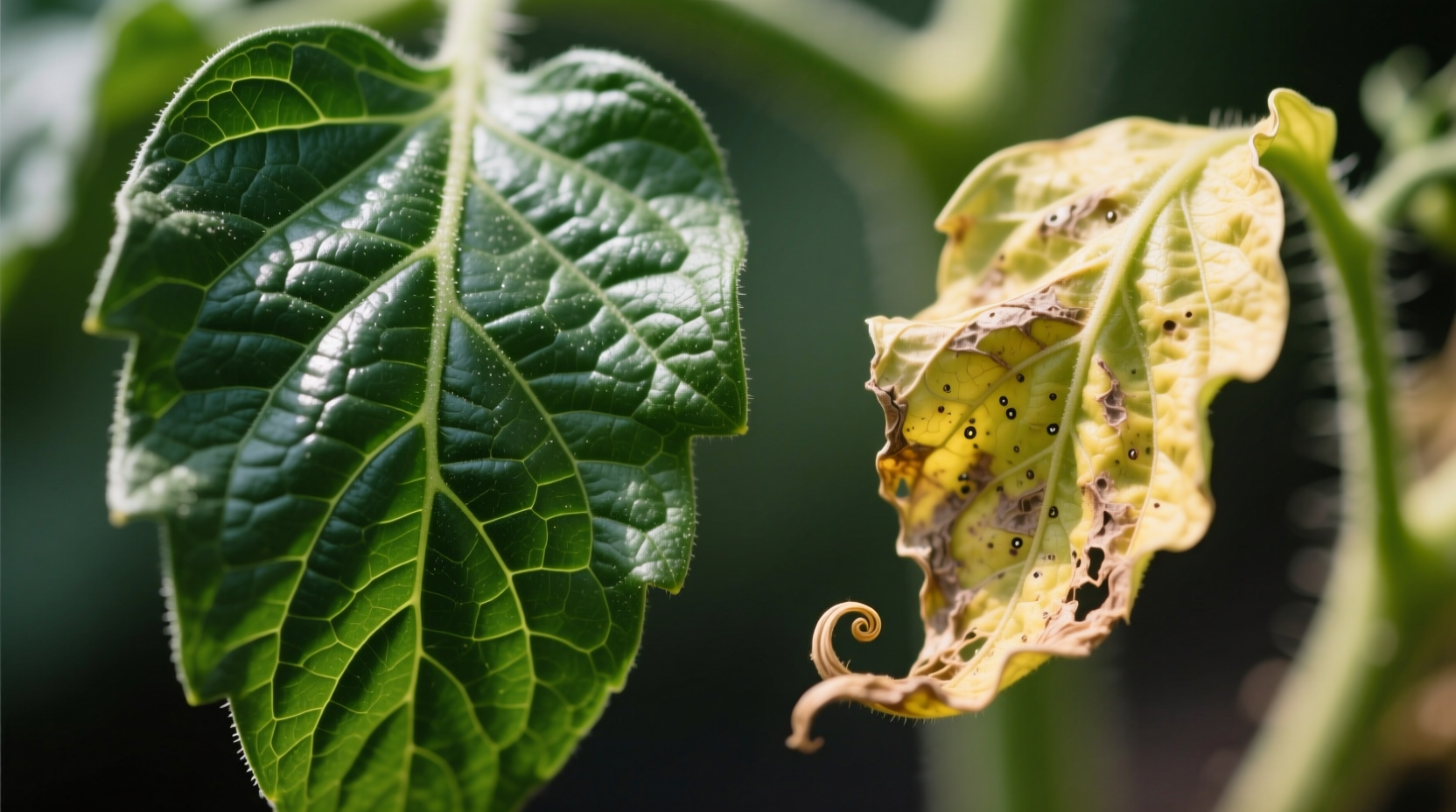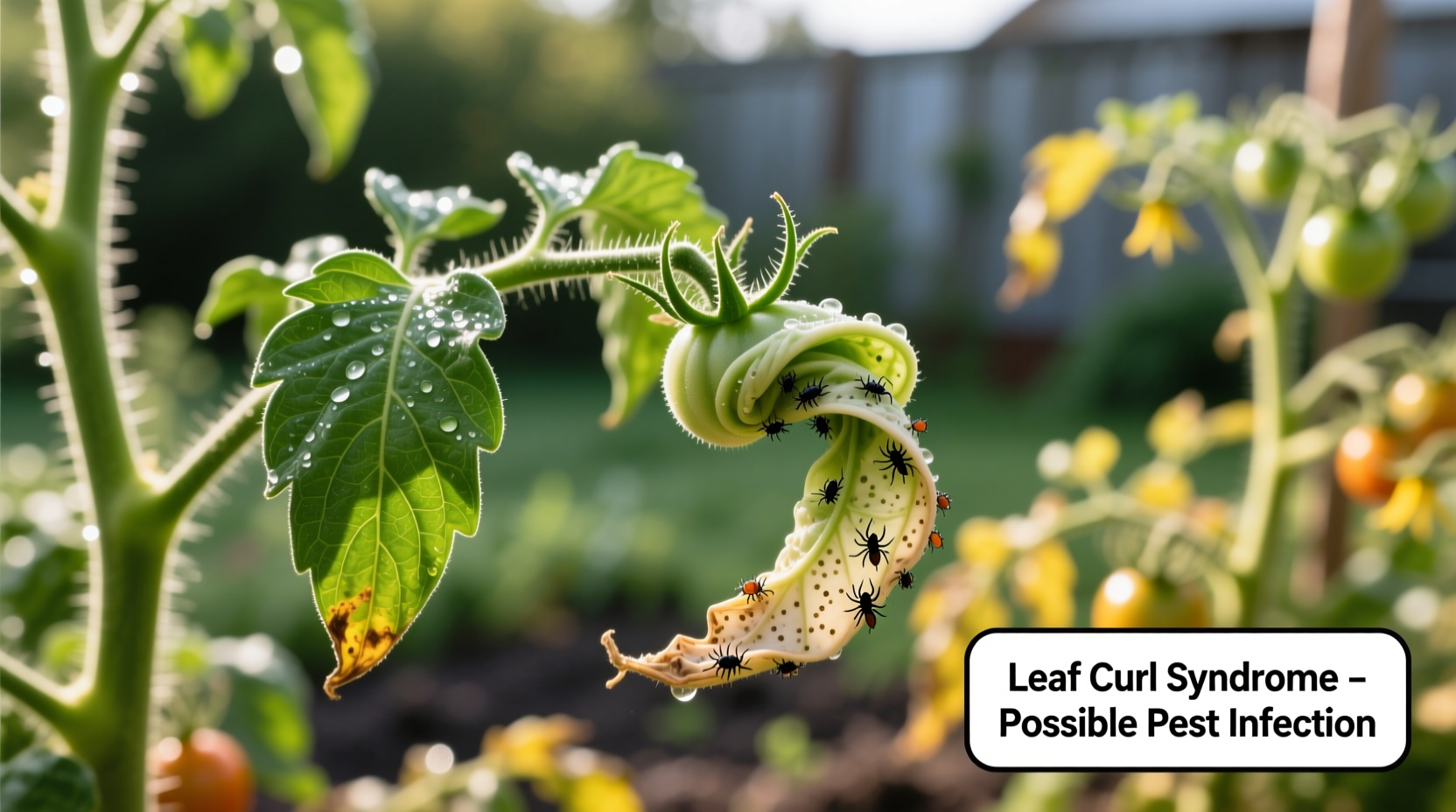Discovering curled leaves on your tomato plants can trigger immediate concern. This common gardening issue affects both novice and experienced growers, often signaling underlying problems that require prompt attention. Understanding the precise cause determines whether your plants face temporary stress or serious disease. This comprehensive guide provides actionable steps to diagnose and resolve leaf curl issues based on agricultural research and field-tested solutions.
Why Tomato Leaves Curl: The Complete Diagnostic Guide
Tomato leaf curl represents one of the most frequent issues reported by home gardeners. While alarming at first glance, curled leaves don't always indicate a fatal problem. The key lies in accurately identifying the cause before implementing solutions. Let's examine the primary culprits behind this common tomato plant symptom.
Environmental Stressors: The Most Common Culprits
Environmental factors account for approximately 60% of tomato leaf curl cases according to the University of California Agriculture and Natural Resources. These non-disease related causes often produce reversible symptoms when addressed promptly.
| Cause | Leaf Appearance | Additional Symptoms | Prevalence |
|---|---|---|---|
| Water stress | Upward curling, firm texture | Dry soil or waterlogged conditions | 35% |
| Heat stress | Downward curling, leathery feel | Leaf scorch, reduced fruit set | 20% |
| Herbicide exposure | Twisted growth, cupped leaves | Stunted development, unusual patterns | 15% |
How Water Management Affects Leaf Structure
Tomato plants respond dramatically to inconsistent watering practices. Both underwatering and overwatering trigger physiological responses that manifest as leaf curl. When soil moisture fluctuates rapidly, plants develop a protective mechanism where leaves curl to reduce surface area and minimize water loss.
Research from University of Florida IFAS Extension shows that established tomato plants require 1-1.5 inches of water weekly, with consistent moisture being more critical than total volume. Mulching with organic materials helps maintain stable soil moisture and reduces curling incidents by up to 40%.

Pest-Induced Leaf Curl: Identifying the Perpetrators
Certain pests cause distinctive curling patterns through their feeding habits. Aphids remain the most common pest culprit, injecting saliva that triggers leaf deformation. These tiny insects often cluster on the undersides of leaves, particularly on new growth.
Whiteflies produce similar symptoms but can be distinguished by their characteristic cloud of insects when disturbed. The Cornell University Cooperative Extension reports that integrated pest management combining insecticidal soaps and beneficial insects resolves 85% of aphid-related curling issues within two weeks.
Disease-Related Curling: When to Worry
Viral infections represent the most serious causes of tomato leaf curl. Tomato curly top virus, transmitted by beet leafhoppers, causes distinctive upward curling accompanied by purple veins and stunted growth. Unlike environmental curling, viral symptoms typically worsen progressively and affect the entire plant.
According to USDA agricultural specialists, viral infections account for approximately 10% of leaf curl cases but result in complete crop loss if not managed. Prevention through physical barriers like row covers proves more effective than treatment once infection occurs.
Diagnostic Checklist: Pinpointing Your Specific Issue
Follow this systematic approach to identify your curling cause:
- Examine timing: Does curling occur during hottest part of day (environmental) or persist constantly (pest/disease)?
- Check leaf direction: Upward curling often indicates water stress; downward curling suggests heat stress
- Inspect undersides: Look for pests, sticky residue, or discoloration
- Assess pattern: Random curling points to environmental causes; systematic curling suggests pests or disease
- Review recent changes: New fertilizers, nearby spraying, or weather extremes
Effective Treatment Strategies by Cause
Implement these targeted solutions based on your diagnosis:
For Environmental Stress
- Establish consistent watering schedule using drip irrigation
- Apply 2-3 inches of organic mulch to maintain soil moisture
- Provide afternoon shade during extreme heat waves
- Test soil for nutrient imbalances, particularly phosphorus and potassium
For Pest Infestations
- Spray affected plants with insecticidal soap solution (5mL per quart water)
- Introduce beneficial insects like ladybugs or lacewings
- Use reflective mulches to deter aphids and whiteflies
- Remove severely infested leaves to prevent spread
For Disease Management
- Remove and destroy infected plants immediately
- Disinfect tools with 10% bleach solution after handling affected plants
- Rotate crops annually to prevent soil-borne pathogens
- Choose resistant varieties like 'Health Kick' or 'Iron Lady' for future plantings
Preventative Measures for Healthy Tomato Plants
Proactive gardening practices significantly reduce leaf curl incidents. The USDA National Institute of Food and Agriculture recommends these evidence-based prevention strategies:
- Start with disease-resistant varieties appropriate for your climate zone
- Maintain consistent soil moisture through proper irrigation scheduling
- Space plants adequately (24-36 inches) to ensure good air circulation
- Monitor plants twice weekly for early signs of pests or disease
- Avoid planting near potential virus hosts like beans or cucurbits
When to Accept and Move Forward
Some leaf curl represents a temporary physiological response rather than a serious problem. Slight upward curling during peak afternoon heat typically resolves overnight as temperatures cool. Similarly, new growth on vigorous plants sometimes exhibits temporary curling that straightens as leaves mature.
Understanding these normal variations prevents unnecessary interventions that could harm your plants. The key distinction lies in whether symptoms persist, worsen, or affect fruit production.











 浙公网安备
33010002000092号
浙公网安备
33010002000092号 浙B2-20120091-4
浙B2-20120091-4